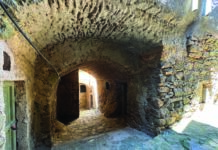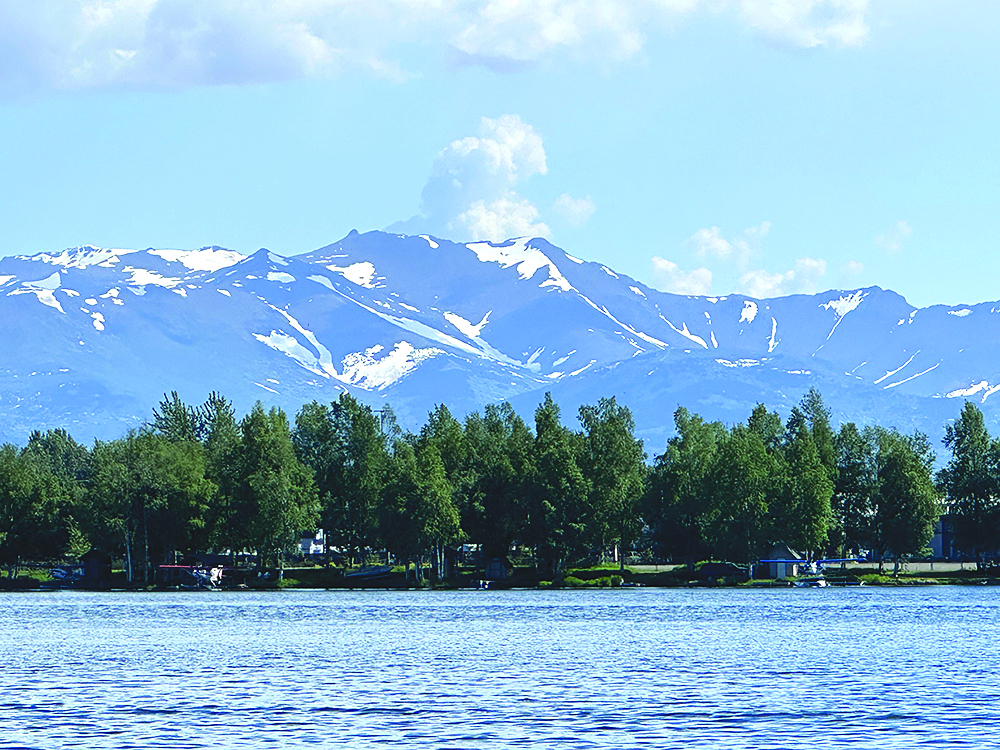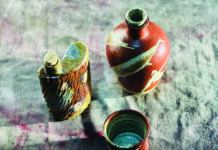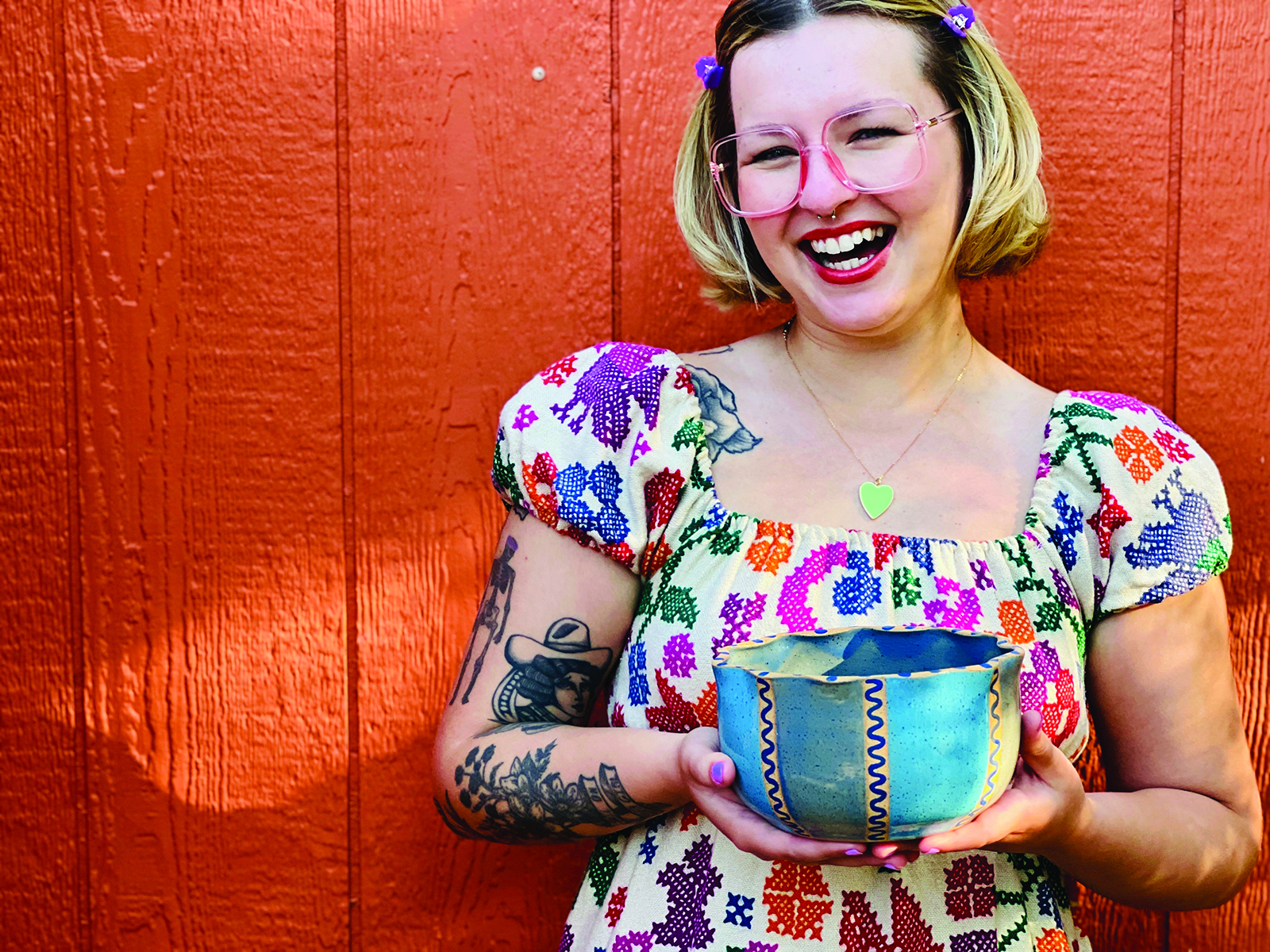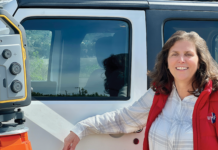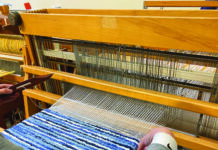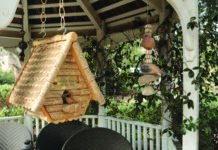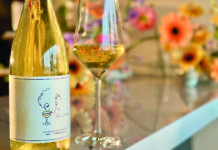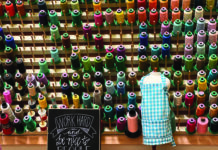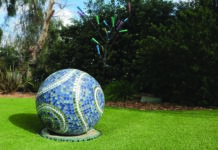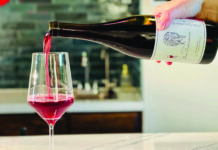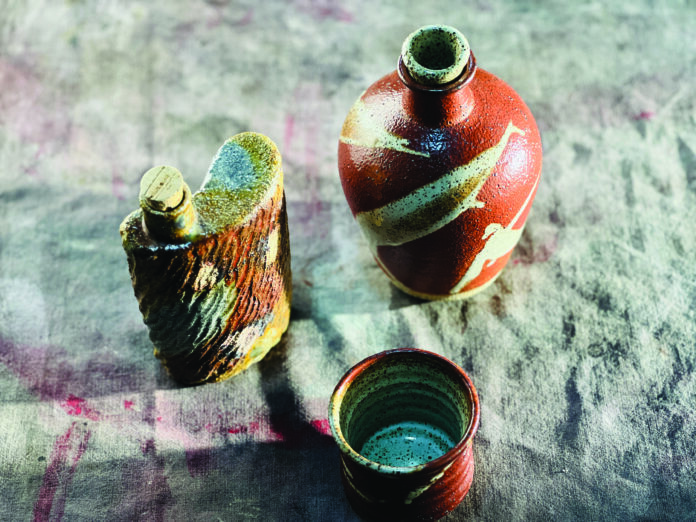
By Nancy D. Lackey Shaffer | Photos by Viktor Budnik
If it involves clay, Shawn Felts has probably worked with it.
He’s been doing ceramics in one form or another for more than 20 years. Passionate about art from an early age, Felts caught the ceramics bug during his freshmen year at the University of Kentucky in Lexington, and has never really looked back. He has taught ceramics at all levels, from elementary to high school and college. He’s run studios, sold merchandise and installed many, many kilns through the years. On top of all this, he has himself made all types of ceramic items, including exquisite tableware used at high-end restaurants.
The native of Kentucky and longtime resident of the San Francisco Bay Area now calls Ventura home. This year, he used his extensive experience to open Clay Gurus, a brick-and-mortar location for all things related to pottery — clay, glazes, tools, kilns and more.
Felts stepped away from the pottery wheel long enough to speak with Ventana Monthly about his lifelong fascination with ceramics, his love of teaching, how he got his nickname and more.
Where are you from originally?
I was born and raised in Louisville, Kentucky. I lived there until I was 18, until I went off to college a whopping hour away in Lexington. After graduating college I moved another hour away to the Cincinnati area. In 2010 I made my big move across the country to San Francisco.
Were you always interested in art?
Yes, I was always interested in art from very young. It seemed to be the only classes I really focused on and the ones in which I didn’t get in trouble LOL. I would also come straight home from school and draw or paint. My six siblings and I were very active and at one point or another, we played every sport that was offered. For me it was playing sports, being outdoors or painting/drawing.
When did you first start working with ceramics?
I did a very small amount of ceramics starting around seventh grade but got a little more into it in high school, although painting, photography, drawing and other art forms still commanded the bulk of my attention. The switch over to ceramics really happened freshman year of college and stuck.
What ceramic artists do you admire?
I consider myself a functionalist. My work is 99% functional and utilitarian. To me, function is the most important part. Why does a coffee mug need to be a certain size, shape and weight? What is the best type of handle for its size? Did I correctly round the lip outward to make it more drinkable? Did I leave it thick enough to keep the coffee hot as long as possible? Does the handle shape give the user the correct balance and feel?
These are the most important questions to me for all the ceramics I make. The second tier of questions then come in which are related to beauty. It does need to be aesthetically pleasing. It needs to be pretty.
I understand that you started teaching ceramics when you were 18. How did that come about?
I did some volunteer work at a few local schools in Louisville when I was in high school. I don’t recall if I requested art classes or was simply lucky, but I absolutely adore kids’ art. They have no concept of what they are “supposed” to do and their work is incredible. I helped teach ceramics in college and then started working at a local pottery studio as soon as I graduated. I taught wheel-thrown ceramics, glazing and was a tech helping load and fire kilns. I also taught specialty weekend workshops in alternate firing techniques like pit fire, barrel fire, Raku and alcohol reduction firing. The next step in the journey was teaching high school ceramics for a couple years before moving to California.
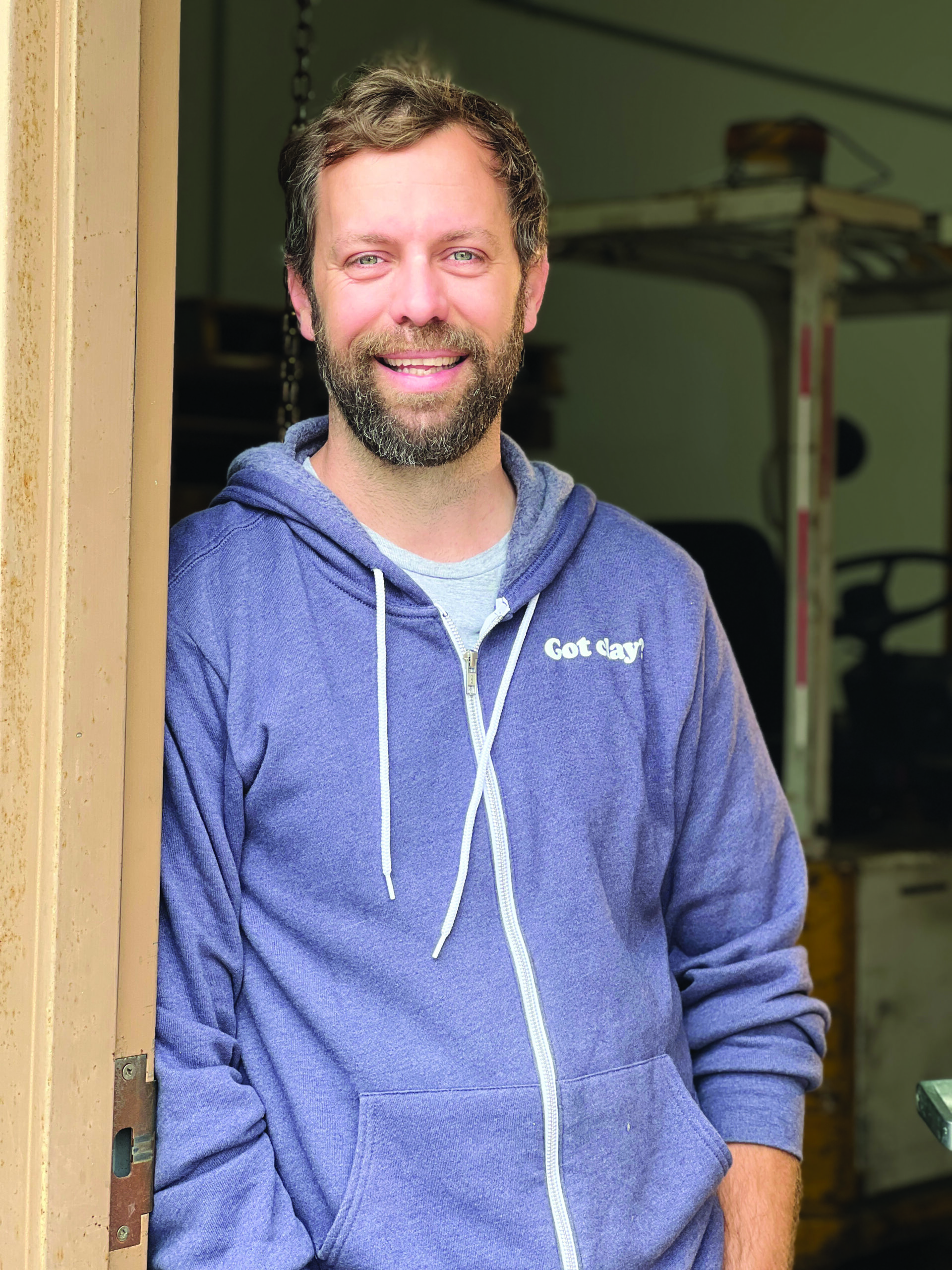
What did you like about teaching?
I enjoy sharing my knowledge and often find myself saying “I have expertise in very little else outside ceramics.” A lot of different jobs and different experiences have given me a unique insight into many facets of ceramics as a whole. To put it simply…ceramics is hard and absolutely nobody “gets it” right away. If they stick with it they eventually do. There is an actual moment where the light switch flips on in their brain and they get it and it’s a very cool thing to witness. Everyone figures it out differently, so you have to have a large arsenal of teaching techniques, ideas and advice to facilitate that growth. Helping them get to that step is very satisfying.
You eventually moved to the Bay Area and worked in a ceramics studio. What was that experience like?
It was incredible.
I moved to San Francisco and my first job was a clay delivery person for a great ceramic supply shop called Clay Planet, based out of Santa Clara. I worked there for about 13 years and worked my way up to the general manager, handling day to day operation and staff. I kept my teaching passion alive helping customers and teaching at a few local studios in San Jose and Palo Alto but I wanted more.
I was working in the Bay Area for about six or seven years before I was lucky enough to be offered a position as studio manager and then studio director, running Clay by the Bay Pottery Studios in San Francisco. We offered around 36 different classes per six-week session equating to about 400 students and more than 200 members. It was a lot of 7-a.m.-to-11-p.m. days but was extremely satisfying watching it grow to what it became.
When did you move to Ventura County?
My wife and I had our son, Niko, in 2021 right in the middle of the worst of COVID. We decided to move from San Francisco to El Cerrito, a cute little city just north of Berkeley. We needed a garage, washer and dryer, parking and all the other things we were missing in an apartment in SF. We loved the short time we spent there but the commute finally got the better of me. For over 10 years I commuted from San Francisco/Berkeley to Santa Clara. It was approximately four hours EVERY. SINGLE. WORKDAY.
Once I had my son things were different. It only took a short time of me saying “hi” to him when I woke up in the morning and then showing up in time to say goodnight for me to realize something needed to change.
What were you doing before opening Clay Gurus?
I worked as a production potter. I wanted a job where I could choose my own hours and work from home. The timing was perfect as a chef friend had just taken a new position as executive chef at AMA Sushi, an incredible new sushi and omakase restaurant opening on the grounds of the Rosewood Miramar Beach resort in Montecito. They wanted someone to work with them and design and create plate ware for their 13-course omakase experience. I designed two seasons: spring/summer and winter/fall. Each season featured different plate ware that was seasonally appropriate, and all handmade from local California clay.
At what point did you switch from making ceramics to selling supplies? Why did you make that shift, and how did you start the business?
I still make work, it just varies so much more now. There were times in my life when I was a production potter throwing a few hundred pots a day for restaurants or local cafes and then other times when it was very little. I just so happen to be on the very little side right now.
I found a need in Ventura for clay supplies and people began reaching out to me. I realized that 100 pottery studios had opened between San Francisco and Southern California and there were no new supply shops. The closest supply shop to the north at the time was in San Jose, and the closest to the south is 30 miles southeast of Los Angeles.
So, I did what anyone would…I took a bunch of people’s orders with no real plan of how to bring the clay and supplies in or how to sell it to them LOL. Fast forward about six months and I have seven tons of clay and supplies sorted in my backyard and garage waiting for about 50 customers to pick up.
Where did the name “Clay Gurus” come from?
My customers granted me that nickname. During my 12 or so years at Clay Planet, I assisted customers with all clay-, glaze-, kiln- and equipment-related issues and technical problems. My reputation as the friendly and knowledgeable clay guy grew and earned me the nickname “The Clay Guru.”
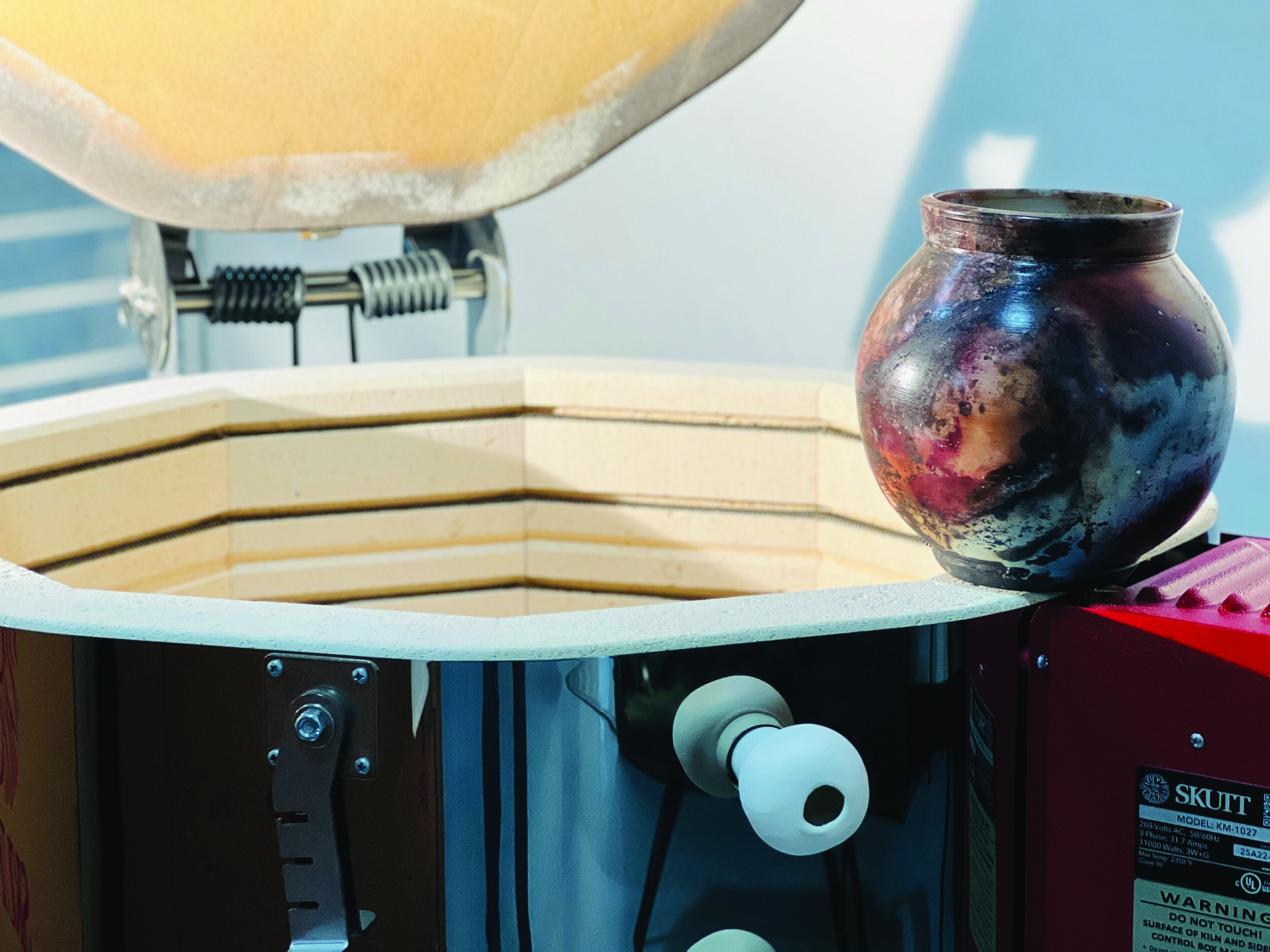
When did you open the space on Goodyear Avenue?
My family and I had been in Ventura for about a year and a half and my business was going better than expected. But I knew at some point I would need to make the jump to the next level. I was always on the lookout for commercial space but, to be honest, never really put a lot of energy into it. Around Halloween 2024 I just so happened to see a promising space and made a call. I viewed it the same day and it was exactly what I was looking for so I pulled the trigger. I leased the space that week and it was the only spot I ever viewed.
It took me a few months to get it set up and bring in my first full truckload of supplies. I soft opened in January 2025 for customers to place web and phone orders for will-call pickup first. And then in early February I opened up retail hours for customers to come in and shop.
How has the response been?
The response has been incredible and I am very happy with the way things have grown so naturally. There is this really cool feeling I get from my customers, especially those who met me early when I moved to Ventura and were picking up orders in my backyard. They are proud of me, and it’s really an incredible sort of exchange or interaction that I never expected but appreciate. It gives me a warm fuzzy feeling I can’t quite describe. Artists are awesome, especially ceramicists and potters. They are a good bunch of kind people.
Tell us a little bit about your store.
Clay Gurus is a full-service ceramic supply shop. We keep approximately 26 different clay bodies in stock totaling about 50,000 pounds. We also stock a full underglaze line of 42 different colors and a full midfire glaze line of over 85 different colors. We keep in stock tools, bats, slip, raw materials, kiln shelves, cones, posts, stilts, repair parts and more.
I am also a certified kiln and ceramic equipment tech that specializes in repairing kilns, wheels, slab rollers, pugmills, extruders and more. We are a dealer for every major name in the industry and we deliver. We accept purchase orders and give net 30 payments on approved customers. I also have a subscription-based service on my website that teaches those interested “how to do everything and anything in ceramics.” We post how-to videos on subjects like throwing pottery, mixing glazes, making slip and clay, repairing kilns, recipes and much more.
Who are your suppliers?
Clay Gurus is an authorized dealer of Laguna, Aardvark, Clay Planet, Western Glazes, AMACO/Brent, Cress, Olympic, Kemper, Speedball, Northstar, Skutt, L&L, Armadillo Art and Craft, Mudtools, Evenheat Kilns, Cone Art Kilns, The Ceramic Shop, Slab Mat, Peter Pugger and more. If we don’t have it, we bring it in. We give exact prices and a lead time and customers can simply pick up items when they are in or we can deliver.
Do you still make ceramics of your own? What kind of projects do you like?
Yes, I have to. I can go a little longer in between work than in my past but still need to make pots and often.
My Kentucky upbringing plays a role in my ceramics and I make a lot of bourbon-related ware. Flasks, bourbon tumblers, bottles, jugs etc. I also like functional bakeware so I make a lot of casseroles, pie plates and other work designed for cooking or baking, including my own personal flameware formula. I have not yet found a woodfire community in this area, but eventually will and then I will be in my happy place as that will always be my favorite way to fire work.

Clay Gurus also offers kiln installation and repair services. How did you learn so much about kilns?
Sometime around 2010 I flew out and spent a few days in a kiln repair program at Skutt. I learned how to diagnose issues with electric kilns as well as maintain, repair and replace parts. Once you learn one style of kiln, you really don’t have a hard time figuring out all the rest. I was a kiln repair technician during my Clay Planet days and covered the entire bay area from Sonoma down to Monterey. I would guess at this point in my career I have repaired somewhere in the range of 4,000 kilns. We also delivered and installed A LOT of kilns.
Clay Gurus sold and installed over 40 kilns last year. We are averaging a kiln install every two weeks since moving into the new space in 2025.
What are some of the most common problems that crop up for kiln owners?
I find the diagnostics to be the hardest part for customers, especially for older-style, non-digital kilns. Newer kilns will tell you within reason what is wrong but you still need to decipher what the culprit could be based on the error code given. There is also a healthy fear of electricity.
The other BIG issue is that kilns need very specific power requirements and for 30% of my repairs, the kilns are either on the wrong voltage, wrong phase of power or do not have the correct amperage in terms of a dedicated breaker. You order the kiln to match your needs and not the other way around. There are dozens of options and one will be right for you.
I won’t let a customer order a kiln from me until they can prove to me the exact power at the location the kiln will be used. Besides that, modern kilns really have the big three: elements, relays and thermocouples. They are more often than not the culprit and simply need to be replaced over time.
I use a lot of car references in my line of work and one feels right here: Picture oil changes, tire replacements and filters. You keep an eye on them and replace them when they need to be replaced and your car…and kiln…will work well for many, many years.
Are there any trends you’ve noticed in clays or glazes since you started doing this? What’s in demand, and why?
When I got into ceramics, cone 5/6 midfire ceramics wasn’t really a thing. It’s now the biggest thing. Dating back to my childhood, ceramics were quite literally low-fire for school programs up until college, maybe high school. If you were lucky, then cone 10 for college and professional potters.
Midfire clay and glaze became extremely popular in the early to mid-2000s. There simply wasn’t clay designed to be durable and “mostly” water tight at cone 6 and the glaze pallet was…not great. The science of encapsulated stains led to better and brighter colors, different from cone 10 gas-fired ware and then better clays followed and boom.
I used to order a 48,000-pound truck of clay every two weeks and it was 90% cone 10 clay. I now order the same amount but it is 90% midfire clay. Good midfire glazes should give you nearly all the options. They can be extremely bright and vibrant saturated colors or colors indistinguishable from cone 10 reduction. Then someone had to go and invent speckled clay for midfire and it took over.
Are your customers mainly professional artists, hobbyists or students?
All of the above. I sell to schools, studios, hobbyists, professional potters and full-blown businesses like handmade tile manufacturers and production potters. Ceramics is the most popular it’s ever been.
There is something about making something with your hands that did not exist before you decided to make it, to invent it. I think, especially in this modern age, so many people spend the day staring at a computer or emailing words and numbers that doing something that has such an obvious result is kind of magical. And that “result” gets better and better as time goes on and you practice. There is obviously technology in ceramics, a great deal of it in fact, but there doesn’t have to be. In many places in the world, clay is dug out of the ground, formed and fired. No clay mixing machines, no pottery wheels or digital kilns. Just clay and fire.

Are most of your customers local? How large is your service area?
My goal is to take care of my local customers first and foremost and they make up over 90% of my business. I have personally done repairs and deliveries to Atascadero, Mission Viejo, Big Bear, Hemet, Victorville, Tehachapi, Beaumont, Irvine, Chino, Corona and every other little city or town in between. We also have our website and try to keep you up to date and add things as often as we can. I have shipped web orders of kilns and other supplies to Virginia, Texas, Florida, Indiana, New York and more.
With your background in teaching, do you think you’ll offer classes?
This is the question I get asked the most and the answer is…maybe? I offer workshops but don’t have the space for a dedicated set of classes.
I have workshops planned (dates not set yet) on kiln maintenance and repairs, how best to apply brush on glazes, wheel-thrown drinking vessels and a pitfire workshop with a firing at the beach. I technically have the space to put in a second level in my current shop, but that’s just an idea for future Shawn to consider
What are the biggest challenges and rewards in your business?
The challenges are really the same as most other careers. It’s work life, home life and time with my family. It’s hard to do it all.
The rewards are much easier to see. My favorite thing that happens in my line of work is watching someone from their very first class or first time buying supplies for themselves to when they become a bad a** potter. When I hear the line from someone, “You taught me in my first ever ceramic class 15 years ago,” I get so happy. They are still doing it and you were somehow involved in that. I also, once in a while, will get photos from a customer or teacher I helped work through some plan of attack on a project. It happened just the other day out of the blue. A dozen photos of a tile mural were texted over from a teacher down near LA — they came out great and she was excited to show off her students’ work after we spent a good amount of time working out some issues.
What other plans do you have for Clay Gurus? How do you see the business evolving in the future?
This is a great question and I don’t have a great answer for it. I guess the hope is just to continue to grow. I will continue to make “how to do everything in ceramics” videos and post them on my site often and likely hire some more staff and see how it goes. I’m not much of a “look too far ahead” planner but more of a “hard work and good timing will get you there” sort of person.
Any words of wisdom for those interested in taking up pottery?
Ceramics is hard. It’s always best to start small and simple. Less is more (and this is coming from someone who makes his living selling these things to people). The ceramics arts are just different these days. Not better or worse, just different. The most famous potters of the 19th and 20th centuries used a couple types of clay and many used less than a dozen glazes total.
My first class in college, we had to make a hundred of each basic shape and make them well before we could move on to Ceramics 2. If you really want to get into this, time and practice will be your friend. Take your time and learn your craft before planning sales and working on your brand.
Take a deep breath and practice the simple steps. The excitement of wanting to do it all is normal and is incredible and I was the exact same way.
Clay Gurus
1572 Goodyear Avenue, Suite A, Ventura
805.535.4039
www.claygurus.com
Follow Shawn Felts on YouTube at
www.youtube.com/@shawnfelts8183.



